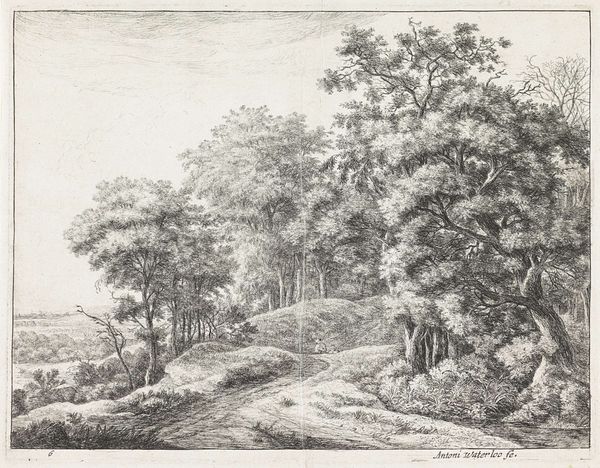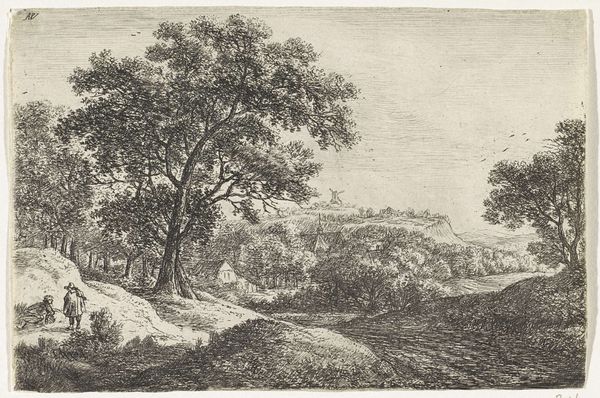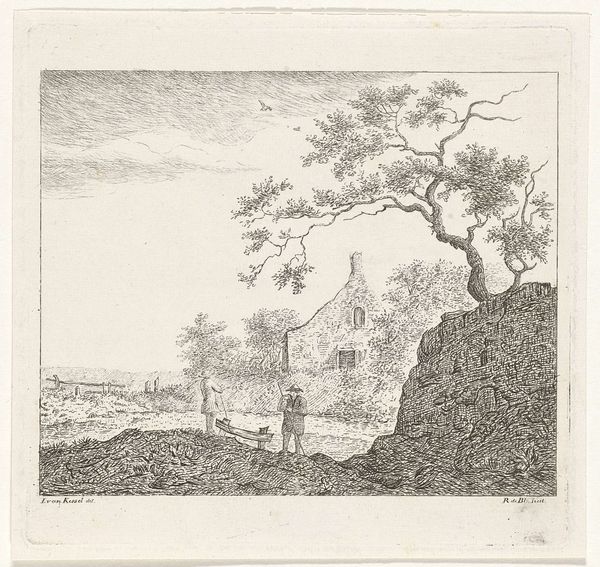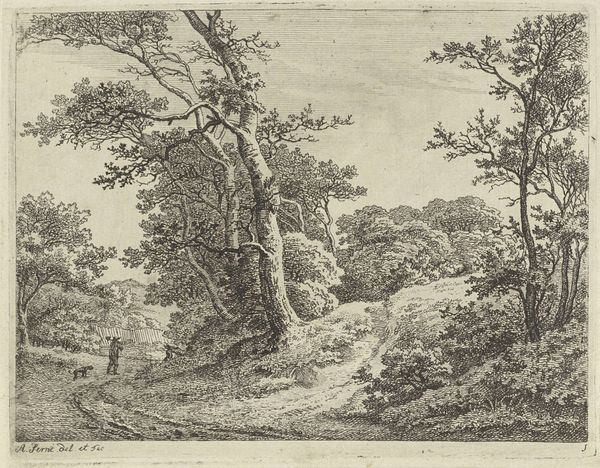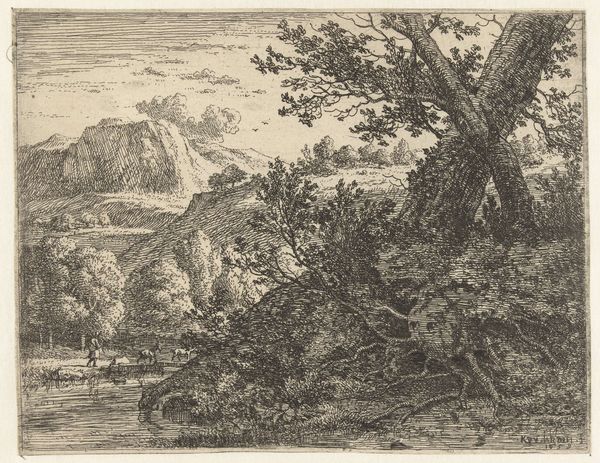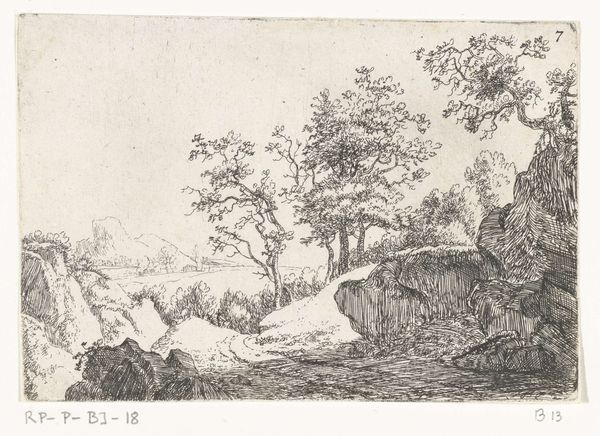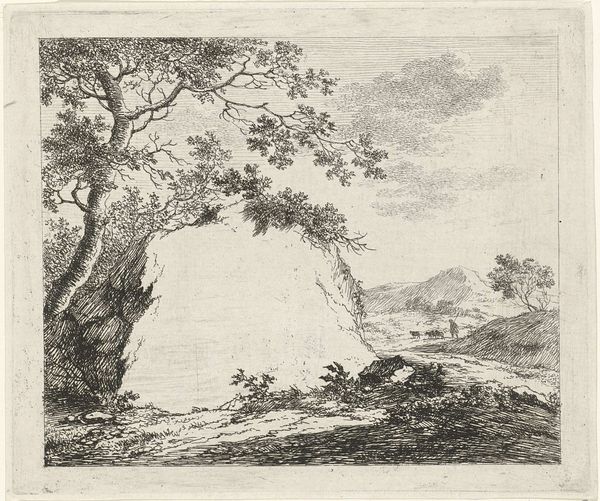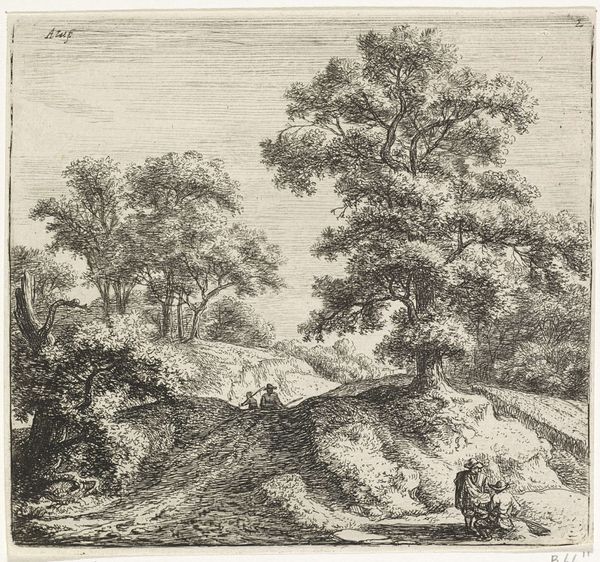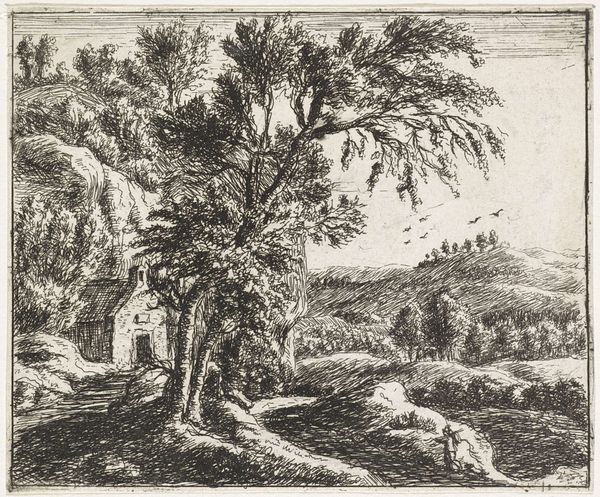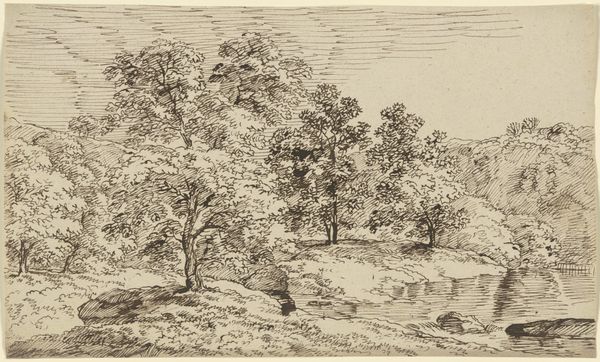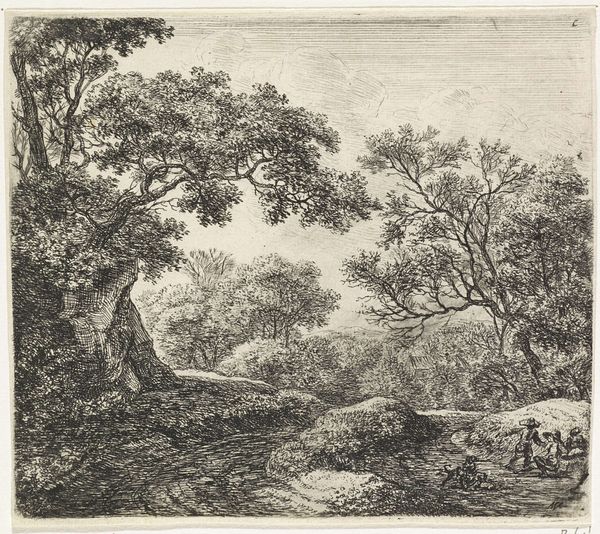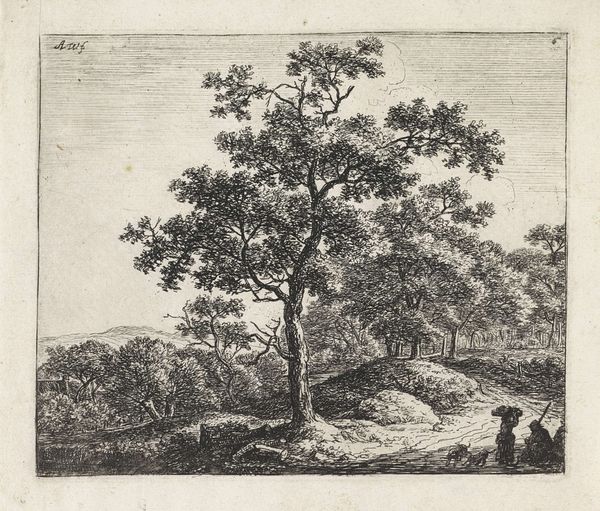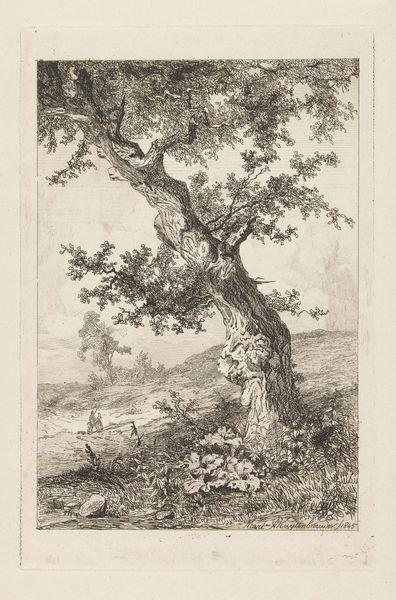
drawing, etching, ink
#
drawing
#
dutch-golden-age
#
etching
#
landscape
#
ink
Dimensions: height 100 mm, width 142 mm
Copyright: Rijks Museum: Open Domain
Editor: So, here we have "Group of Trees on a Hill with Passing Rider," possibly from 1624 to 1670, etched and drawn in ink by Jan van Aken. There's something very ordinary, yet peaceful, about this scene. What strikes you about this piece? Curator: The prevalence of landscape etchings like this speaks volumes about the burgeoning Dutch Republic and its self-fashioning. Remember, the 17th century sees a rising merchant class, hungry for images reflecting their connection to the land. This isn’t some idealized pastoral scene, though, is it? Editor: No, it seems quite… everyday. Curator: Precisely. Van Aken isn't just depicting a place; he's participating in constructing a Dutch identity. He offers a sort of “walkable” landscape that the Dutch public would enjoy. It's a very human-scale interaction with nature, wouldn’t you agree? And who consumes these images? Who could afford art then? Editor: That's true, I see the humble house in the distance, a contrast with more romanticized landscapes for the aristocracy. But who were the two people at the edge? I suppose that landscape helped forge this group’s cultural belonging? Curator: Excellent point. That's how collective identity takes shape - through these shared visual experiences and common stories that paintings are meant to depict. But do you think the presence of the rider hints at social stratification even within this "common" identity? What do you think the trees mean in the whole landscape? Editor: Hmmm, good food for thought. I initially overlooked the undercurrents of social dynamics. I just appreciated it for its scenic value. Curator: And that's okay, too. It is so easy to consume imagery in a naive manner and let the powerful impact our way of thinking. Now, do you notice a deeper significance when looking again? Editor: Now, considering the buyers of that time, there must be more, of course. That shifts my perspective considerably, it really changes the nature of this artwork and gives me more information! Curator: Precisely! Seeing the art in connection to the contemporary societal context can often broaden our knowledge of its nature and impact.
Comments
No comments
Be the first to comment and join the conversation on the ultimate creative platform.
